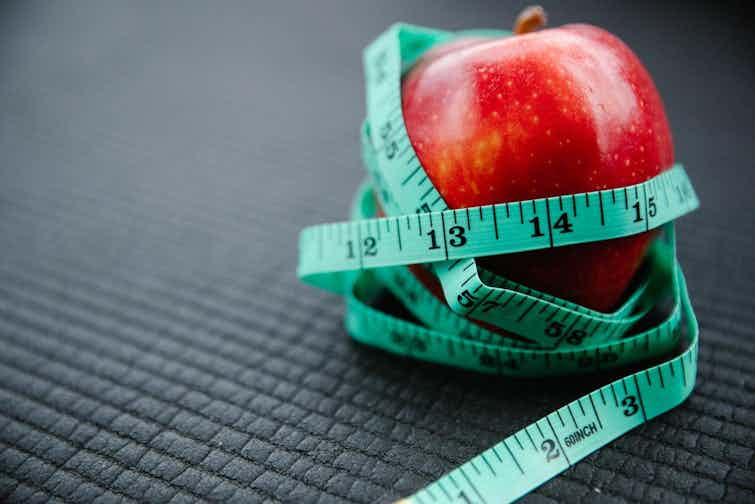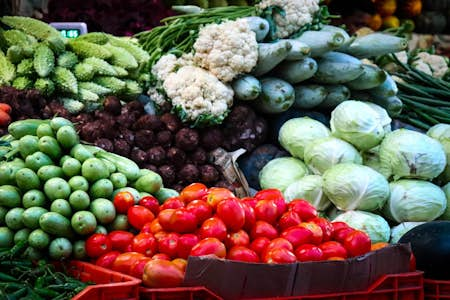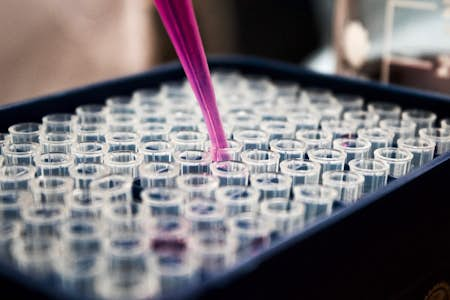The liver reduction diet is a nutritional plan aimed at reducing the size and fat content of the liver. It typically involves limiting the intake of high-calorie and high-fat foods, increasing consumption of fruits, vegetables, and lean proteins, and avoiding alcohol and sugary beverages.
Doctors often recommend this diet if you have fatty liver disease or are preparing for weight loss surgery, such as bariatric surgery, to improve your liver health and reduce surgical risks.
Frustrated with food waste or don't know where to start with a shopping list? Try a food subscription box to wash those worries away and put your diet - and finances - on the right track!
How the liver reduction diet works
The liver reduction diet is a carefully structured dietary plan that facilitates successful surgical procedures, particularly keyhole surgery. Before undergoing keyhole surgery, it is essential to shrink the liver to ensure the surgeon can operate effectively. Failure to sufficiently reduce the liver's size may prompt surgeons to choose open surgery, potentially resulting in larger abdominal scars and increased chances of complications.
Keyhole or laparoscopic surgery is a minimally invasive procedure that accesses the abdomen through small incisions. It includes gynaecology, urology, gastroenterology surgeries, and weight loss surgeries like gastric band and gastric bypass procedures.
The diet works by reducing glycogen (a type of sugar) stored in the liver and muscles. Due to factors like obesity, your liver might be larger and fatty before surgery, so your healthcare provider may recommend this diet. As you follow the diet, your body loses water from the liver, making it softer and more flexible to move whilst operating.
What can you eat on the liver reduction diet?
You can approach the liver reduction diet in three different ways. The first is a food-based diet, the second is a meal replacement plan, and the third is a diet made up of milk and yoghurt. Whilst all three programs vary with what you can consume, they all share one thing: they put you in a strict calorie deficit.
They also share similarities in that alcohol is off-limits, smoking is not permitted and keeping active is encouraged. Whether your surgeon has advised you to undergo the liver reduction diet or not, keeping fit, especially as you age, is advised for a number of benefits.
Food-based diet
The first plan is the food-based diet, where you can consume between 800 and 1200 calories daily. A meal plan on this diet comprises low-calorie, low-carbohydrate, low-sugar and low-fat foods. Your surgeon will provide exact portions, but a typical day of eating can look as detailed below.
Breakfast: kick off the morning with a small portion of cornflakes, shredded wheat, rolled oats or bran flakes with a measured serving of semi-skimmed milk. Another option is a medium-sliced piece of wholegrain toast with a low-fat spread.
Lunch: You can expect to eat one slice of medium-sliced, wholegrain bread or another low-carbohydrate alternative such as half a bagel. You should also accompany this with a protein source such as thin packet slices of ham, two eggs, or tuna with brine. Throughout the day, 100ml of fruit juice is also allowed.
Dinner: Following this food-based plan, you should eat plenty of vegetables. An evening meal will often include a couple of roast potatoes or one average-sized potato, either boiled or mashed, alongside a protein source such as a small serving of tofu, chicken breast or lean meat such as pork loin.
Meal replacement diet
With this diet, you consume pre-portioned liquids, so you don't have to measure anything. This plan also means you can completely avoid regular food during this time, making resisting temptation easier. The benefit of this diet is that it's simpler and more straightforward, so it's easier to stick to.
Again, this diet is also very low calorie, but instead of foods, you can only drink shakes and smoothies or eat soups from brands such as Slimfast, Optifast or Celebrity Slim Soups. There is also the option to make meal replacement shakes yourself on this plan. These can include milk, milk powder, fibre powder and syrup. However, you must carefully portion all ingredients if you choose this route.
Milk and yoghurt diet
The milk and yoghurt diet is another option to shrink your liver pre-surgery. As the name suggests, this plan consists of a diet made up of milk and yoghurt. One benefit of this plan is that its high-protein nature will keep you fuller for longer - essential for those consuming so few calories. However, one drawback is that it lacks any nutritious variation.
Specifically, on this diet, you’re allowed three pints of skimmed, semi-skimmed milk, lacto-free, almond or soya milk throughout the day. In addition, you can have two pots of low-calorie yoghurts that are approximately 60 calories each. You should also take a multivitamin and mineral tablet daily to get all the nutrition you need.
Free foods
It’s natural to feel hungry on this diet, especially as your body first transitions into consuming so few calories. All three diet plans do allow you to consume some foods freely, including:
- Low-calorie, sugar-free jellies.
- Coffee and tea within milk daily allowances and with calorie-free sweeteners.
- No-sugar squash.
- Diet fizzy drinks.
- Stock cubes.
- Herbs and spices.
If you’re following the milk and yoghurt plan, there is also the option to add sugar-free milkshake syrups or flavourings, such as vanilla essence, to your milk.
Side effects of the liver reduction diet
Whichever plan your doctor or surgeon recommends you to follow, there are common side effects of the liver reduction diet. Not everyone will experience these, and some may experience more than others. That said, any side effects of this diet typically last only briefly before surgery, so it's essential to have confidence in the process.
Ketosis
Ketosis is the state the body goes into following a low-carb, keto, or, in this instance, liver reduction diet. In the metabolic state of ketosis, the body begins to burn fats instead of carbohydrates as fuel. Whilst it can have its benefits, such as weight loss and managing diseases such as type 2 diabetes and epilepsy, being in a state of ketosis can also have side effects. These include bad breath, kidney stones, dehydration and muscle cramps.
Low energy
Low energy and fatigue can quickly become apparent on the liver reduction diet, with standard dietary recommendations not being met. To help with this, you can take a daily multivitamin tablet, regardless of which plan you’re following.
Low sex drive
Low energy and low sex drive go hand in hand, and the liver reduction diet can also reduce your sex drive. The reason for this is tied mainly to inadequate intake of nutrients, which, according to recent research, is closely linked to low libido.
Irritability
You’re not you when you’re hungry! Whilst the side effect of being irritable isn’t exclusive to the liver reduction diet, being ‘hangry’ whilst dieting is very real. A 2018 study from the University of North Carolina showed that when hungry, our bodies induce more negative emotions, with lower blood sugar and effects on brain functionality.
Hair thinning
A low-calorie diet, such as a liver reduction diet, can lead to hair thinning, especially when also low in protein. To avoid this, you should include protein sources like boiled eggs or lean ham in the food-based plan. After gastric band or bypass surgery, hair thinning and loss may persist but usually resolves within six months. Consult your doctor if hair thinning continues after this period.
Constipation
Constipation is more of a common side effect if you opt for the meal-replacement plan. To help with this, you can drink plenty of fluids, avoid alcohol, and increase the fibre in your diet. You can also try Fybogel sachets but always check the label first to ensure they are suitable for you.
Whilst side effects on the liver reduction diet are very normal, if you struggle or find the plan interfering with your day-to-day routine and would benefit from further advice, it’s important to contact your surgeon or GP.
Alternatives to the liver reduction diet
The liver reduction diet is very restrictive, and you should only practise it following the advice from your surgeon, GP or dietitian for a short period of time. Improving your liver health, however, is something to be encouraged for everyone.
Enjoying a well-balanced diet without significantly restricting calories or food groups is one way to reduce your possibility of future liver disease. You should include five portions of fruit and vegetables a day, grains such as oats and rice, dairy or dairy alternatives and protein. As we age, consuming protein-rich foods becomes especially important for promoting healthy muscles.
Should you intend to lose weight, though, being in a calorie deficit is key. Put simply, this is consuming fewer calories than you burn. Everyone’s daily calorie (kcal) requirement differs slightly based on height, age, gender and activity level. However, an average male needs approximately 2,500 kcal, and a woman requires around 2,000 kcal. While in a calorie deficit, reducing this number or increasing exercise is necessary.
For more information on weight loss and a balanced diet, the NHS offer a healthy diet plan that will help you stick to your calorie deficit and keep the weight off. If you have any pre-existing medical conditions, contact your GP before going into a calorie deficit.
Who should not do the liver reduction diet?
You should only practise the liver reduction diet following a surgeon's recommendation. Because of the side effects, surgeons will first assess whether you are suitable. Whilst not an exhaustive list, you should not partake if you meet the following criteria:
- Pregnant women.
- Breast-feeding women.
- Adolescents.
- Those with an eating disorder.
- Those with acute mental health conditions.
- Those with acute or chronic renal failure.
If you have diabetes, you can consider embracing the liver reduction diet. However, being cautious is crucial, as your blood sugar levels might decrease significantly, potentially leading to hypoglycemia or hypo. Therefore, if you take medication to manage your diabetes, you may need to adjust the dosage to balance your blood sugar levels and prevent them from dropping too low.
Post-liver reduction diet
Once the surgery concludes, the liver reduction diet comes to an end. However, what comes next? Your surgeon will discuss the subsequent dietary steps with you regardless of why you followed the liver reduction diet. If you underwent the diet before weight-loss surgery, your calorie intake will continue to be lower than usual to accommodate your post-op stomach changes.
The right plan for your liver reduction diet
The liver reduction diet can be a powerful tool when recommended by your healthcare provider. With three flexible plans, it allows you to tailor your approach for optimal results before surgery.
If you have received professional advice to follow this diet, it often leads to positive outcomes, making your surgical journey smoother and safer. However, it's crucial to remember that this diet isn't suitable for everyone. If you haven't received guidance from your healthcare team, it's best to avoid attempting it.
Always consult with your medical professionals to chart the most appropriate course for your unique health needs, ensuring the best possible outcomes for your well-being.
Image Credit: Annushka Ahuja at Pexels









